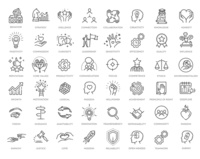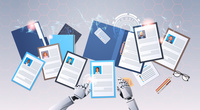Recent economic (e.g., shift from large organizations to decentralized networks of individuals and small businesses), technological (increased use of machine learning algorithms in the workplace), and societal changes (e.g., #MeToo and #TimesUp movements) require organizations to adapt to the transforming nature of work by challenging assumptions, changing corporate cultures, and altering the way work is performed. The “Organizational Leadership and Diversity” group aims to 1) investigate the use of artificial intelligence (AI) tools in the workplace to unleash the true potential of diversity and inclusion (D&I), 2) develop ways to mitigate bias in human-machine partnership in the workplace, and 3) explore the nature of leadership in the AI age. Consistent evidence suggests that diversity and inclusion leads to improved organizational outcomes, such as the increased quality of decision-making, better hiring results, reduced employee turnover, and higher employee engagement. Furthermore, D&I increases creativity on both the individual and team level, drives radical innovation, and relates to higher financial performance. Despite the pronounced benefits of D&I, most organizations still struggle with implementation of D&I, leaving the question of how organizations can create meaningful change in this area. The research group answers this question by investigating the possible use of AI tools to promote D&I. For example, AI can be implemented to use inclusive language in job descriptions, recommend jobs that job-seekers might not have considered for themselves, provide blind ranking of applicants, build diverse slates of candidates, scrutinize the history of hiring, promotion, termination, and bonus decisions, and audit pay practices. We use qualitative and quantitative methods to explore what AI tools are suitable for promoting D&I and how they can be implemented in a responsible, ethical manner. The second area of research is to develop ways to mitigate bias in human-machine partnership in the workplace. Previous research suggests that AI tools can be biased against people of color as well as women. As individuals also have their own unconscious biases, would human-machine partnership be more helpful or harmful, especially in high-risk work scenarios? We explore how humans interact with AI to better understand under what conditions combining the inputs of humans and machines produces the most accurate results. The third area of research looks into ways how the use of AI is changing the nature of leadership. AI tools have been increasingly implemented in organizations across industries to enhance decision-making, fundamentally changing workflows, roles, and responsibilities of leaders. Indeed, AI tools seem to supplant many “hard” elements of leadership, especially those connected with collecting, synthesizing, and processing of vast amounts of information. However, previous research suggests that the increased use of AI at the workplace also strengthens the role of leaders’ soft skills, such as the leader’s adaptability to constant changes, his/her ability to provide followers with a clear and appealing vision, and the willingness to learn from both inside and outside the organization. We focus on exploring what leadership capabilities and skills are necessary for leaders to successfully deal with the challenges in the age of AI. In addition, we investigate how AI tools can be used to enhance leadership development.
Value-Driven Leadership Approaches to Managing Organizations
One of the main concerns of modern organizations is ethics, where only few institutions have not been affected by abuse of power. Recent history (e.g., Volkswagen emissions scandal, BP Deepwater Horizon... Read More
Are Facial Recognition Systems with a Human-in-the-Loop Really the Best of Both Worlds?
As more and more organ... Read More
Looking back to find a clear view forward: Improving managerial decision-making through systematic reflection
The aim of this project is to develop a digital tool that can help leaders learn to mitigate cognitive biases in goal setting. Read More
Stigmatization of women in the workplace: Sources of stigma and its consequences at the individual, organizational, and societal level
Gender balance has been a declared goal in business and society for decades as gender diversity leads to more equality and better decision-making, enhances financial performance of organizations, and fosters crea... Read More








